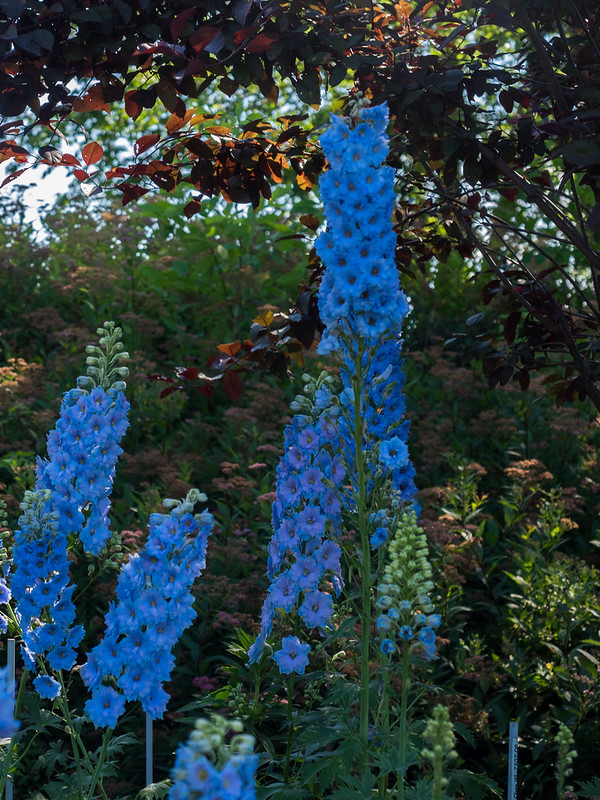Cultivating delphinium flowers can transform your garden into a vibrant and enchanting space, with their tall spikes of brightly colored blooms adding a touch of elegance and charm. Known for their striking blue hues, delphiniums are a favorite among gardeners looking to make a bold statement in their flower beds. Proper care and attention are key to growing these stunning perennials, as they require specific conditions to thrive. In this guide, we will delve into the essential steps for planting, nurturing, and maintaining delphinium flowers, ensuring they flourish beautifully in your garden.
Planting Delphinium Flowers
Choosing the Right Location
Selecting the ideal location for planting delphinium flowers is crucial for their growth and longevity. Delphiniums thrive in areas that receive full sun, ideally six to eight hours of direct sunlight each day. However, in regions with very hot summers, partial shade during the afternoon can help prevent the plants from wilting. Additionally, choose a spot with good air circulation to reduce the risk of fungal diseases. The soil should be well-draining and rich in organic matter, with a pH level between 6.5 and 7.5. Avoid low-lying areas where water may pool, as delphiniums are susceptible to root rot. By carefully selecting the right location, you create an environment where your delphiniums can flourish and display their vibrant blooms.
Preparing the Soil
Proper soil preparation is essential for the successful cultivation of delphinium flowers. Start by testing the soil pH to ensure it falls within the optimal range of 6.5 to 7.5. If necessary, amend the soil to achieve this pH level. Incorporate plenty of organic matter, such as compost or well-rotted manure, to enhance soil fertility and structure. Delphiniums prefer well-draining soil, so consider adding sand or gravel to improve drainage if your soil is heavy or clay-like. Loosen the soil to a depth of at least 12 inches to allow the roots to establish deeply. This preparation creates a nutrient-rich, well-aerated environment that supports robust root development and vigorous growth, setting the stage for your delphiniums to thrive.
Sowing Seeds or Transplanting
When planting delphiniums, you have the choice to sow seeds or transplant young plants. If starting from seeds, sow them indoors 8 to 10 weeks prior the last frost date. Plant the seeds in seed trays filled with a sterile seed-starting mix, lightly covering them with soil. Keep the soil moist and maintain a temperature of around 70°F until germination, typically occurring within 2 to 3 weeks. Once the seedlings develop their second set of true leaves, they can be hardened off and transplanted outdoors.
For transplanting young plants, choose healthy specimens with well-developed root systems. Dig holes twice the size of the root balls and space the plants about 18 to 24 inches apart to allow for proper air circulation and growth. Gently place the plants in the holes, backfill with soil, and water thoroughly. Whether sowing seeds or transplanting, proper planting techniques ensure strong, healthy delphiniums.

Caring for Delphinium Plants
Watering and Fertilizing
Proper watering and fertilizing are essential to keep your delphinium plants healthy and vibrant. Delphiniums prefer consistent moisture, so water them deeply once or twice a week, ensuring the soil remains evenly moist but not waterlogged. During hot or dry spells, you may need to increase watering frequency. Applying mulch around the base of the plants can help retain soil moisture and reduce the need for frequent watering.
Fertilizing delphiniums is equally important for their growth and bloom production. Apply a balanced, slow-release fertilizer in early spring when new growth begins. Follow this with a high-phosphorus fertilizer just before the flowering period to promote vibrant blooms. Avoid over-fertilizing, which can lead to excessive leafy growth at the expense of flowers. Regularly monitor your plants for nutrient deficiencies and adjust your fertilization regimen accordingly. Consistent watering and proper fertilization ensure your delphiniums remain robust and beautiful throughout the growing season.
Pruning and Deadheading
Pruning and deadheading are vital practices for maintaining the health and appearance of your delphinium plants. Regular deadheading, or the removal of spent flowers, encourages the plant to produce more blooms and extends the flowering period. Use clean, sharp scissors or pruners to cut off the faded flowers just above a set of healthy leaves. This process helps redirect the plant’s energy from seed production to new growth and flowering.
Pruning is also essential for promoting strong, sturdy stems and reducing the risk of disease. In early spring, thin out the shoots when they are about 3 inches tall, leaving the strongest stems. This improves air circulation and reduces overcrowding. Additionally, cut back the plants to about 6 inches above the ground after the first flowering cycle is complete. This may stimulate a second bloom later in the season. By incorporating these pruning and deadheading techniques, you ensure your delphiniums remain healthy and vibrant.

Managing Pests and Diseases
Managing pests and diseases is crucial for maintaining the health and beauty of your delphinium plants. Common pests include aphids, slugs, and caterpillars, which can damage leaves and flowers. Regularly check your plants and remove pests by hand. For severe infestations, consider using insecticidal soap or neem oil, following the product instructions carefully.
Delphiniums are also susceptible to fungal diseases such as powdery mildew and botrytis blight. To prevent these issues, ensure good air circulation by spacing plants appropriately and thinning out dense growth. Avoid overhead watering to minimize moisture on the foliage, which can promote fungal growth. If signs of disease are noticed, promptly remove and dispose of affected plant parts. In severe cases, the application of a fungicide may become necessary.
Maintaining a clean garden, practicing proper watering techniques, and regularly monitoring your plants can significantly reduce the risk of pests and diseases, ensuring your delphiniums stay healthy and vibrant.

